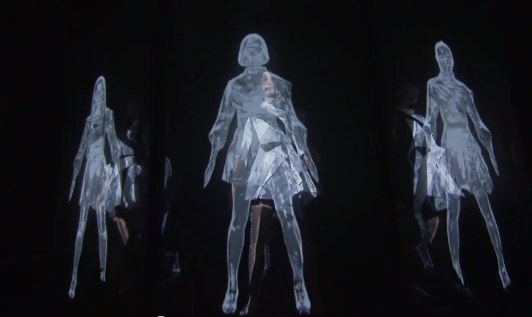|
Perfume is a Japanese techo-pop group, a trio of women cranked out of a Hiroshima idol-singer mill nearly 15 years ago; last week they at last made their SXSW debut, after touring the United States for the first time only last year. Their performance — an eye-popping, digitally mashed-up overload of projection-mapped spectacle — offers exciting new ways to consider the negotiations between digital and live bodies on stage. SXSW has supported talent from Japan for most of its run, despite often pigeonholing it in the single Japan Nite showcase — which observed its 20th anniversary this year (I had the fortune of being present for the first back in ’96, featuring the great Lolita No. 18). But as bands from Japan have upped their cultural cachet here, bigger acts have spilled over into the festival’s other venues and showcases. Perfume’s set last week — sandwiched at the end of the festival's Interactive portion and the beginning of its bedrock music week — certainly turned some heads. Witness this breathless report from Wired, of all places, which lacks only a gif of the writer’s eyes bulging out like a Tex Ritter cartoon cat to underscore an emotional override of all critical faculties. The performance was “the most amazing thing,” it was “lightyears beyond” (twice), it was an “unbelievable” “fever dream,” and numerous other soggy superlatives. From the “hot damn” headline to the golly-gee, shrugging conclusion, it’s an unfortunately Dorothy-esque response to technological wizardry from a media source I’d like to think is still known more for more Toto-esque curtain-pulling; then again, I know well the addled SXSW brain-state of too many shows, too many beers, and not enough words left come mornin’. What the Wired report does offer — in addition to the on-target observation that this particular concert production belongs to a “future in which the physical and digital have converged to the point of being utterly indistinguishable” — is a concise description of how the actual video rig of the performance contributes to the spectacle beyond the stage itself. The performance (in the official video above) features an intriguing blend of atoms and bits, and the latter appear to be primary. Make what you will of any metaphor lurking within the opening gambit — a sliding beam of light and what appears to be the corresponding sound of a copy machine — the small venue is quickly overlaid with laser-like projections of a much larger 3D space. Perfume has performed in massive venues for up to 50,000 people; scaling down an arena show to a smaller club while retaining some of the cavernous presence of the arena is a newly promising feat of this kind of tech. At two points within this performance, the projection-mapping presents the stage space as something much larger — a kind of construction-site series of beams and boxes, which appear to be an extension of an even larger, Death Star-like sphere off to one side. The perspective is achieved in moments of utter darkness, in which the audience itself disappears. The attending bodies cannot be seen, only heard still cheering. Whereas I’ve raised questions previously about the presence/absence of digital performers, this presentation extends the inquiry to both sides of the equation. We see the three women, boxed in behind rectangular panels of glass or plastic. These act as the chief projection screens for much of the digital content displayed — and that includes the human performers’ spectral digital avatars, which are rougher and featureless bodily shapes overlaid on the flesh bodies. Reconnaissance scouts sent from the ghosts in the machine, perhaps, or a new take on the clichéd introductory spotlight. The panels move about a bit, encasing the human bodies in various ways. (Gender remains a factor in shows like this. Would three young men be presented as delicate curios inside boxes?) We can only assume the bodies we see are human, of course, since the non-digital performers don’t step ever-so-briefly from behind the screens until 3:45, and they don’t start “singing” until four minutes in. That’s before we get one more flash of the faceless, glowing avatar copies of the trio, this time mimicking poses flashed by the human singer-dancers. Human performers are at least still taking the lead among the digital ones.
Given that the slightly unsettling motion of the resulting video was achieved not by actual physical camera movements but instead by a carefully pre-planned, coordinated technique of blending imagery from several cameras into one apparently restless tracking shot, this video presentation stands even more firmly as its own individual performance. The venue audience saw one thing; those of us watching this video saw not only the usual filmed representation of a live event but one with added production value exclusive to the video itself. The trick, however, is that this was all achieved in pre-production instead of post-. This video represents an as-is account of a live performance. So do they both count as “live” (that is, watching the video for the first time as opposed to being there)? Paging Peggy Phelan, paging Philip Auslander.
0 Comments
Leave a Reply. |
this blahg
I'm THOMAS CONNER, Ph.D. in Communication & STS, and a longtime culture journalist. Categories
All
Archives
June 2024
|


 RSS Feed
RSS Feed